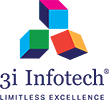Yes, most portfolio management software is accessible across numerous devices and platforms. They are either web-based or have mobile applications that can be downloaded for many operating systems, including Windows, MacOS, iOS, and Android. This enables customers to easily access their portfolio and make adjustments on the road, regardless of the device or platform they are using. Some software also allows for device synchronization, which ensures that all data is current and consistent.
List of 20 Best Portfolio Management Software
Bubble Innovatorâ„¢ PPM is a cloud-based solution designed to simplify project and portfolio management for businesses. Created with a focus on driving innovation, managing new product development, and efficiently oversee...Read More Bubble Innovator
Ganttic is a resource and project management software that offers a visual, customizable representation of your project portfolio and resource pool. Its efficient deployment process and user-friendly interface make it suitable for all types of teams...Read More Ganttic
ET Portfolio is a portfolio management tool that helps you keep a close eye on your investments and mutual funds. With timely updates and notifications, you can easily track the performance of your portfolio and make informed decisions to achieve you...Read More ET Portfolio
Todoist is a dynamic project management software that offers flexibility to tailor to your unique requirements. It effectively organizes your sales pipeline, tracks budget, manages resources, and monitors project progress. Its automated workflow boos...Read More Todoist
Excella: a advisory software built for RIAs, PMS, and Family Portfolio Managers. Seamlessly manage asset transactions and generate comprehensive reports with ease. This software offers a comprehensive range of performance indicators and strategies to...Read More Excella advisory software
Planview, strategic management software designed to streamline the entire planning and execution process. With advanced features for tracking KPIs, managing projects, and monitoring progress, Cascade Strategy guarantees flawless execution of strategi...Read More Planview
RationalPlan is a project management solution designed for businesses of all sizes. From efficient planning to seamless task management and file sharing, RationalPlan offers a comprehensive platform to boost productivity and streamline processes. Wit...Read More RationalPlan
Portseido, the top-of-the-line portfolio tracker for portfolio managers and investors. With its user-friendly interface, Portseido allows users to conveniently monitor and access their investments at any time and from anywhere. This efficient softwar...Read More Portseido
Airtable is a CRM software designed to efficiently manage operations for businesses in the entertainment, restaurant, and hotel industries. Its feature-rich platform eliminates redundancy and allows for seamless integration with popular social media...Read More Airtable
Stock Portfolio Organizer solution for effortlessly managing multiple currencies, keeping precise track of performance, and efficiently handling trust distributions. With its advanced scripting engine and secure local data storage, users have complet...Read More Stock Portfolio Organizer
iRecord Portfolio Management & Accounting is a asset management solution for investors, traders, corporates, CA & Family offices, and consultants. Our user-friendly software streamlines the management of diverse portfolio assets such as stocks, commo...Read More iRecord Portfolio Management & Accounting
Enfusion is a software that revolutionizes investment management through its cloud-based platform. It streamlines front, middle, and back-office tasks, empowering asset managers and hedge funds to prioritize performance. By offering a unified workflo...Read More Enfusion
Quantis - Asset and Wealth Management is a treasury solution for asset managers, insurers, and pension fund managers. This innovative software streamlines investment management operations with customizable compliance rules and advanced workflow capab...Read More Quantis - Asset and Wealth Management
InsureCRM is a CRM solution tailored for the insurance sector. With a focus on customers, this highly adaptable software caters to the distinct requirements of insurers, brokers, and clients. Experience the advantages of InsureCRM for your enterprise...Read More InsureCRM
AXLE solution for family offices, investment professionals, and asset managers. Our integrated platform combines cutting-edge technology and top-tier services to provide a comprehensive range of solutions for all your financial needs. With AXLE, you...Read More AXLE
Experience the game-changing portfolio management software for advisors - Assetbook. With its user-friendly interface, easily track performance, manage client assets, and generate insightful reports. Our exceptional customer support ensures a seamles...Read More Assetbook
CoinTrack AI solution for streamlining your cryptocurrency portfolio. With automatic monitoring, easily keep track of all your exchanges and wallets in a secure platform. Our user-friendly dashboard and customizable charts provide a comprehensive vie...Read More CoinTrack AI
Triskell PPM Factory is a versatile portfolio management tool that can be tailored to fit the needs of any organization. Users have full control over customization, ensuring alignment with strategy and business processes in a multi-organization and m...Read More Triskell PPM Factory
Invrep solution for startups, small businesses, and investors. Our cutting-edge services are tailored to specifically meet the needs of these two critical groups. With Invrep, you have access to a vast array of tools and resources to aid in making st...Read More Invrep
Learn More About Portfolio Management Software
- What Is Portfolio Management Software?
- What Are The Recent Trends In Portfolio Management Software?
- Benefits Of Using Portfolio Management Software
- Important Factors To Consider While Purchasing Portfolio Management Software?
- What Are The Key Features To Look For In Portfolio Management Software?
- Why Do Businesses Need Portfolio Management Software?
- How Much Time Is Required To Implement Portfolio Management Software?
- What Is The Level Of Customization Available In Portfolio Management Software?
- Which Industries Can Benefit The Most From Portfolio Management Software?
- Conclusion
What Is Portfolio Management Software?
Portfolio Management Software is a digital application developed to assist people and companies in efficiently managing their investment portfolios. In today's fast-paced and ever-changing financial markets, you must have a comprehensive system in place to track and analyze your investments. This is where portfolio management software comes into play. This software provides a variety of functions that enable you to monitor, track, and analyze your investments in real time.
It is an all-in-one solution that gives you a comprehensive view of your complete portfolio, including stocks, bonds, mutual funds, and other investments. It also allows you to specify investing objectives, create customized reports, and do performance analysis. One of the main advantages of Portfolio Management Software is its ability to automate operations like data entry and portfolio rebalancing.
This saves you time and reduces human mistake, resulting in more precise and efficient portfolio management. Furthermore, with the rise of digital platforms, many software choices now provide mobile or web-based access, allowing you to monitor your investments on the go. Furthermore, Portfolio Management Software includes comprehensive risk management features like scenario analysis and stress testing to help you make informed investment decisions.
It also has a portfolio optimization option, which employs algorithms to generate the best combination of investments to maximize returns while minimizing risk. Access to real-time data and analytics is critical in today's competitive investment environment. Portfolio Management Software provides comprehensive reporting tools, such as charts and graphs, to help you spot trends and patterns in your portfolio's performance.
Some software alternatives include artificial intelligence and machine learning capabilities, which improves data analysis efficiency and accuracy. When selecting a Portfolio Management Software, you must examine the features, pricing, and compatibility with your existing systems. It is also critical to confirm that the software conforms with all applicable legislation and has strong security measures to protect your sensitive financial information.
Investing in high-quality Portfolio Management Software not only simplifies the process of managing your investments, but it also enables you to make informed decisions and meet your financial objectives efficiently. With its broad capabilities and user-friendly interface, it is a wonderful asset for any individual or business trying to improve their investment management.
What Are The Recent Trends In Portfolio Management Software?
Portfolio management is an ever-changing field, with new technology and ideas appearing on a daily basis. With the rise of digital transformation and the increasing complexity of modern marketplaces, firms must implement efficient and effective portfolio management solutions. So, what are some current trends in portfolio management software that buyers should be aware of? Let's have a closer look.
1. Cloud-Based Solutions: One of the most significant trends in portfolio management software is the transition to cloud-based solutions. With the rise of remote work and the necessity for real-time data access, cloud-based software enables organizations to securely store portfolio data and access it from any location with an internet connection.
2. Integration With Other Systems: Portfolio management software is also becoming more integrated with other systems. This means that portfolio management software may now be integrated with other business tools including project management software, data analytics platforms, and accounting software. This enables firms to implement a more simplified and unified structure, removing the need for different software solutions.
3. Artificial Intelligence: The application of artificial intelligence (AI) in portfolio management software is fast expanding. AI-powered portfolio management software can analyze data, spot trends, and provide data-driven suggestions, helping organizations to make better decisions.
4. Mobile Applications: As the use of mobile devices grows, an increasing number of portfolio management software vendors are developing mobile applications for their products. This gives customers mobile access to their portfolio data, allowing them to manage their portfolios and make real-time decisions.
5. Increased Focus On Data Protection: As businesses deal with sensitive and secret data, strong data protection has become a major priority. Many portfolio management software companies are now prioritizing advanced security measures to protect their clients' data from cyber threats.
Benefits Of Using Portfolio Management Software
Portfolio management software is a vital tool for firms and people that want to successfully manage their investments. This software simplifies the process of tracking, analyzing, and making educated portfolio decisions, resulting in several benefits for users. We've described the primary benefits of utilizing portfolio management software to assist you make an informed decision when selecting the best software for your needs.
1. Comprehensive Portfolio Study: One of the most significant benefits of adopting portfolio management software is the ability to conduct a thorough study of your whole investment portfolio. This software offers comprehensive tools and reports to assist you better understand your portfolio's performance, such as historical data, risk assessments, and current market trends. With this comprehensive view, you can make more educated decisions to manage your portfolio and maximize results.
2. Time-Saving Automation: Managing a portfolio can be time-consuming, especially if you have several investments. However, portfolio management software allows you to automate numerous dull and repetitive operations, such as tracking portfolio performance, rebalancing, and updating transactions. This automation saves you time and effort, allowing you to focus on strategic decisions and other critical areas of investment management.
3. Risk Management: Investing always involves some level of risk, and portfolio management software can help you manage and minimize these risks efficiently. Advanced risk assessment tools allow you to identify potential hazards and estimate their influence on portfolio performance. This enables you to make data-driven decisions and tailor your portfolio to reduce potential losses.
4. Increased Efficiency: Portfolio management software allows you to view all of your investment information in one place, eliminating the need to switch between many platforms and tools. This unified solution improves productivity and decision-making by offering a comprehensive view of your investments' performance.
5. Optimal Diversification: Diversifying your portfolio is critical for risk management and optimizing profits. Portfolio management software offers complex tools and features to assist you in achieving optimal diversification, which ensures that your investments are dispersed over many asset classes, industries, and locations. Diversifying your portfolio reduces the impact of market swings and increases your chances of meeting your investing objectives.
Important Factors To Consider While Purchasing Portfolio Management Software?
When it comes to portfolio management, having the appropriate tools can make a huge impact. From investment tracking to performance analysis, portfolio management software provides a variety of tools to assist you in making educated decisions and staying on track with your financial objectives. However, with so many options accessible, it might be difficult to select the ideal one. That's why we prepared this buyer's guide to assist you navigate the key elements to consider when selecting portfolio management software.
1. Features And Functionality: The first thing to think about while looking for portfolio management software is the features and functionality it provides. Look for software that encompasses all areas of portfolio management, including investment tracking, risk assessment, performance analysis, and asset allocation. Make sure it has a user-friendly interface and customized dashboards to meet your needs.
2. Compatibility: Ensure that the software is compatible with your devices and operating systems. Some portfolio management software offers a desktop version, while others are cloud-based. Determine which solution is ideal for you, and make sure the program is compatible with your preferred devices.
3. Integration: Think about how the program will work with your existing systems, such as accounting, banking, or other financial instruments. Seamless connection can save you time and effort in data entry while providing a more accurate view of your portfolio.
4. Security: Given the importance of sensitive financial information, security should be a major focus when selecting portfolio management software. To protect your data, look for encryption-enabled software and secure servers. In addition, check to see if they adhere to industry norms and laws.
5. Customer Support: Portfolio management software, like all software, can have technical faults or human errors. It is critical to have access to dependable customer service when necessary. Look for software that provides a number of help options, including phone, email, and live chat, as well as a professional and responsive support crew.
6. Cost: The cost of portfolio management software varies substantially depending on the features and capabilities available. Consider your budget and the value you will derive from the software. Some software provides free trials, which are an excellent opportunity to try the product before committing to a subscription.
7. User Reviews: Before making a purchase, look into the software and read reviews from current and prior users. This will give you an indication of how the software performs, how easy it is to use, and how responsive the customer service is. Look for both favorable and negative reviews before making a decision.
What Are The Key Features To Look For In Portfolio Management Software?
When looking for the best portfolio management software, there are a few important things to consider. These qualities will allow you to make an informed decision and select the best alternative for your company's needs. So, what crucial characteristics should you seek for in portfolio management software? Let us delve in and find out.
1. User-Friendly Interface: One of the most significant factors to consider while choosing portfolio management software is the user interface. A user-friendly design will make it easier for you to explore the software and use the functions you require. Look for software with a straightforward and intuitive interface; this will save time and shorten the learning curve.
2. Customization And Scalability: Each firm has unique portfolio management requirements. That is why it is critical to look for software that provides customization and scalability choices. This allows you to customize the program to meet your individual needs and scale it as your organization grows.
3. Portfolio Tracking And Analysis: The major goal of portfolio management software is to monitor and analyze your investments. Look for software that allows you to track your portfolio in real time and perform detailed analysis. This will allow you to make data-driven decisions and monitor the profitability of your investments.
4. Risk Management: Managing risk is an important part of portfolio management. Look for software that has risk assessment and management tools. These tools will assist you in identifying potential hazards and taking preventative measures to mitigate them, ensuring the safety of your investment.
5. Reporting And Analytics: The capacity to create reports and analyze data is critical for making sound judgments. Look for software that includes comprehensive reporting and analytics options, such as configurable dashboards, to help you follow your portfolio's growth and make data-driven decisions.
6. Integration With Other Systems: To simplify your portfolio management process, seek for software that works with other systems and tools you use. This will enable for seamless data transfer while reducing manual work, saving you time and effort.
7. Security: Given the sensitive financial information involved in portfolio management, security is a high consideration. Look for software with extensive security features, such as encryption and user permissions, to protect your data from unwanted use.
Why Do Businesses Need Portfolio Management Software?
"Portfolio Management Software is a crucial tool for firms of all sizes that want to successfully manage their projects, resources, and overall business performance. This powerful program automates the process of recording and analyzing project progress, resource allocation, and financial data, enabling firms to make more informed decisions and increase overall productivity and profitability.
One of the primary reasons firms use portfolio management software is to acquire a comprehensive perspective of their project portfolio. With the capacity to track many projects and their interdependencies, this software provides a high-level picture of the organization's progress and assists in identifying potential bottlenecks or dangers. This knowledge enables firms to make strategic decisions and prioritize initiatives based on their impact on the entire portfolio.
Another critical feature that makes portfolio management software useful for firms is its capacity to maximize resource allocation. This software enables firms to track resource consumption, discover over or underutilized resources, and make required adjustments to ensure resource allocation is optimized. This not only helps to ensure project deadlines are fulfilled, but it also reduces burnout and increases labor productivity.
with addition to project and resource management, portfolio management software aids with financial management. Budget tracking, cost analysis, and forecasting features allow firms to keep a close check on their project spending and guarantee they stay within the budget. This not only helps with expense management but also identifies cost-cutting options.
Furthermore, portfolio management software has comprehensive reporting and analytics capabilities, enabling firms to create real-time data and custom dashboards. These reports offer significant insights into project performance, resource utilization, and financial data, allowing businesses to make data-driven decisions that are in line with their strategic objectives.
Finally, in today's fast-paced corporate climate, remote teams and distributed businesses require centralized and cloud-based portfolio management software. It facilitates collaboration, provides access to real-time data, and improves communication, ensuring that everyone is on the same page and working toward the same goal.
How Much Time Is Required To Implement Portfolio Management Software?
The time required to implement portfolio management software varies according to the organization's size and complexity, as well as the capabilities and customization required. On average, it takes 2-6 months to fully develop and integrate the program into your company's operations. The first step in installing portfolio management software is to evaluate your organization's present procedures and discover gaps and areas for improvement using the program.
This could take several weeks to a month, depending on the availability of key stakeholders and the extent of the assessment. The next step is to choose the program that best matches your organization's demands. This includes studying and demoing several software options, negotiating contracts and price, and obtaining approval from key decision-makers.
This process could take an additional 1-2 months. After selecting the program, the deployment process begins by establishing the necessary infrastructure, such as servers, databases, and system integrations. This could take between 2-4 weeks, depending on the complexity of your IT architecture. The next step is to configure the program to operate with your organization's processes and operations.This includes creating accounts, permissions, and custom fields, among other things.
This stage can take anywhere from one to two months. Following the initial configuration, the program must be tested and examined for any changes or adjustments. This could take from a few weeks to a month, depending on how many testing cycles are required. Finally, after rigorous testing and approval, the program can be completely launched and incorporated into your organization's procedures. This procedure might take anywhere between 2 and 6 weeks, depending on the size and complexity of your organization.
What Is The Level Of Customization Available In Portfolio Management Software?
When it comes to portfolio management software, the level of flexibility varies substantially between solutions. Before making a purchase, it is critical to understand the extent of customisation possible, since this can have a significant impact on the user experience and software effectiveness. In general, customization can be classified into three levels: basic, moderate, and sophisticated.
Basic customisation often involves the ability to personalize the interface, such as changing the color scheme or adding company branding. This level of customisation is appropriate for those who like a straightforward and consistent appearance for their product. It may also have the option to add or delete specific features or modules based on the user's requirements. Moderate customisation frequently includes more advanced features like custom fields, processes, and reports.
This level of customisation is perfect for those with unique data tracking and reporting needs. It enables a more personalized experience and can assist boost efficiency and productivity. Advanced customization provides the greatest versatility, allowing for comprehensive modification of workflows, automation, and integrations. It is ideal for enterprises with complicated portfolios and procedures that require a high level of customization.
This level of customization may also include building custom dashboards and user roles. It is important to remember that the level of customisation may vary depending on the pricing options given by the software supplier. Some may only provide extensive customization with their more expensive plans, although basic customization may be offered to all users. Before making a purchase, it is critical to examine your company's needs and determine the level of customization required for portfolio management. This will assist you in selecting the best software to meet your objectives and maximize the potential of your portfolio.
Which Industries Can Benefit The Most From Portfolio Management Software?
Portfolio management software is a valuable tool for firms in a variety of industries. Its ability to easily track, analyze, and manage a company's initiatives, investments, and resources makes it an invaluable asset to any organisation. However, certain industries may profit more from this software than others.
Let's explore, we'll look at which sectors can benefit the most from employing portfolio management software.
1. Financial Services: The banking industry is one of the most visible benefits of portfolio management software. Financial institutions require sophisticated tools to manage their portfolio of assets, investments, and risks due to their complexity and reliance on data. Portfolio management software gives these organizations a robust platform to evaluate their investment strategy, track performance, and make sound investment decisions.
2. Construction: Construction firms frequently work on many projects at the same time, making it difficult to keep track of everything. Portfolio management software can help you monitor the progress of numerous construction projects, manage resources, and track spending. It also aids in the identification and resolution of potential difficulties before they escalate into costly problems, hence enhancing project execution and profitability.
3. Healthcare: The healthcare industry deals with large amounts of data, ranging from patient records to research projects. Healthcare firms can use portfolio management software to efficiently analyze and manage this data. It can also improve resource allocation, project timeliness, and communication, leading in better patient outcomes and healthcare management.
4. Technology: In today's fast-paced and ever-changing technological market, businesses must handle multiple projects, products, and services at once. Portfolio management software equips IT organizations with the tools they need to prioritize and track their work, ensuring timely delivery. It also allows them to evaluate data and make data-driven decisions, which drives innovation and keeps them ahead of the competition.
5. Manufacturing: Portfolio management software is crucial for simplifying manufacturing operations, from procurement to production and delivery. It enables industrial organizations to plan and manage their projects, resources, and inventory, resulting in smooth operations and cost savings. With the growing complexity of global supply chains, portfolio management software is becoming an essential tool for manufacturers.
Conclusion
To summarize, selecting the appropriate portfolio management software is critical for any organization or individual seeking to efficiently manage their investments and assets. With so many options on the market, it is critical to analyze your specific requirements and preferences before making a purchase. When comparing software, make sure to carefully consider its features, functionality, and convenience of use.
Consider the amount of assistance and training supplied by the company, as well as its interoperability with your current systems. Remember to consider cost, not only in terms of initial payments, but also any recurring maintenance or subscription fees. It may be worthwhile to invest in a more expensive choice if it has comprehensive functionality and integrates neatly with your other financial tools.
Finally, the ideal portfolio management software should be user-friendly, efficient, and flexible to meet your specific requirements. By carefully examining these criteria and conducting research, you can make an informed decision and find software that will help you meet your investment objectives. Thank you for reading our buyer's guide; we hope it has been useful in your search for the best portfolio management software.
Portfolio Management Software FAQ's
Can Portfolio Management Software Be Accessed Across Multiple Devices And Platforms?
Is Portfolio Management Software Future-Proof And Adaptable To Emerging Technologies Like AI, Blockchain Or IoT?
Portfolio management software is constantly changing to stay ahead of the curve and future-proof. Many software companies are combining AI, blockchain, and IoT technology into their systems to improve data analytics, automate tasks, and make better decisions. This makes the software more versatile and ready to handle new technologies. Portfolio Management Software is well-equipped to address the needs of a continually evolving investment landscape due to its ability to integrate and use new innovations.
Is There A Free Trial Offered To Assess Portfolio Management Software Before Committing?
Yes, most portfolio management software companies include a free trial period in which consumers can try the product before committing to purchase it. Users can examine the software's features and functionalities to see if it matches their needs. It is encouraged to use the free trial to thoroughly evaluate the software's features and make an informed decision.
Does Portfolio Management Software Offer Data Security Features And Meet Regulatory Compliance Standards?
Yes, most portfolio management software includes comprehensive data security safeguards to ensure the safety and confidentiality of sensitive financial information. This includes access limits, encryption mechanisms, and scheduled backups. Furthermore, many software solutions adhere to industry laws such as GDPR and FINRA to maintain the confidentiality of client information. It is advised that you thoroughly investigate and select software that suits your specific regulatory compliance needs.
Can Portfolio Management Software Integrate Seamlessly With Existing Tools And Platforms?
Yes, most portfolio management software is designed to work easily with other tools and platforms used by businesses, such as accounting software, project management tools, and CRM systems. Integrating with existing tools creates a more streamlined and efficient workflow because all data is synced and updated in real time. This also eliminates the need for manual data entry, lowering the possibility of errors and saving users time.






















